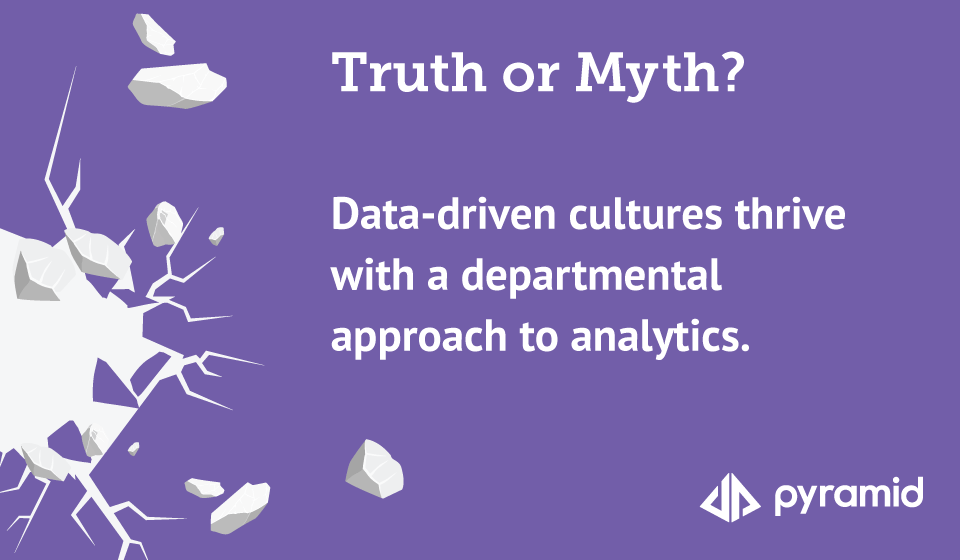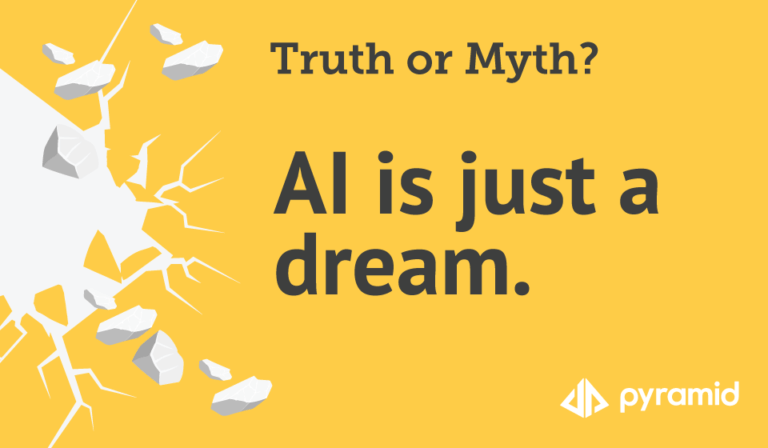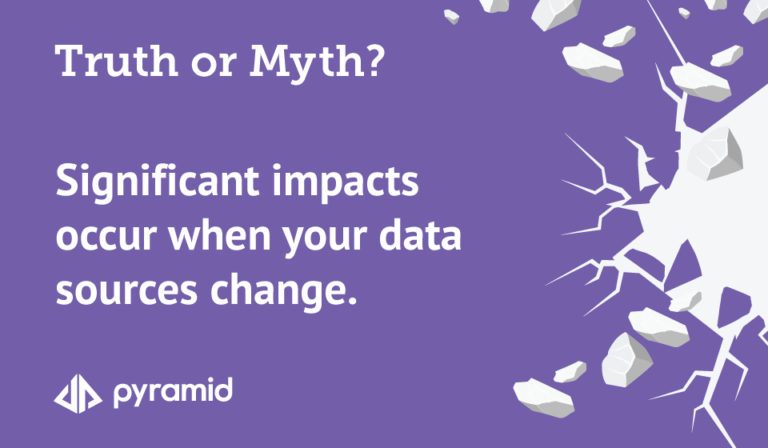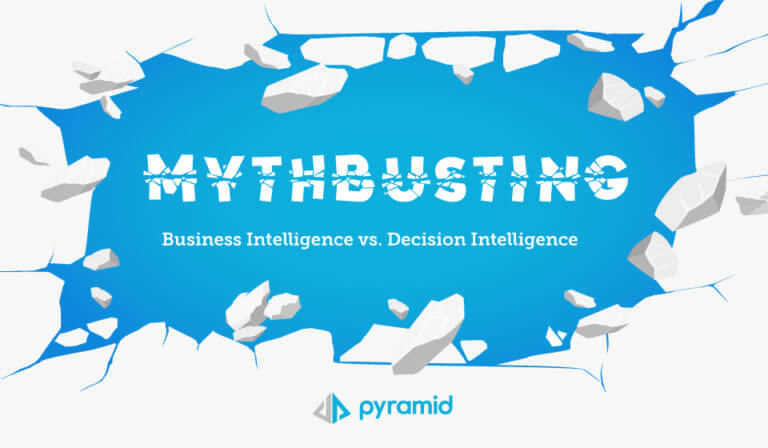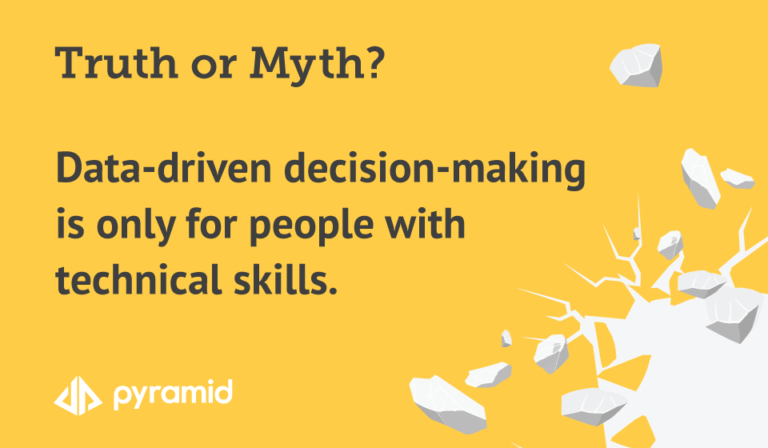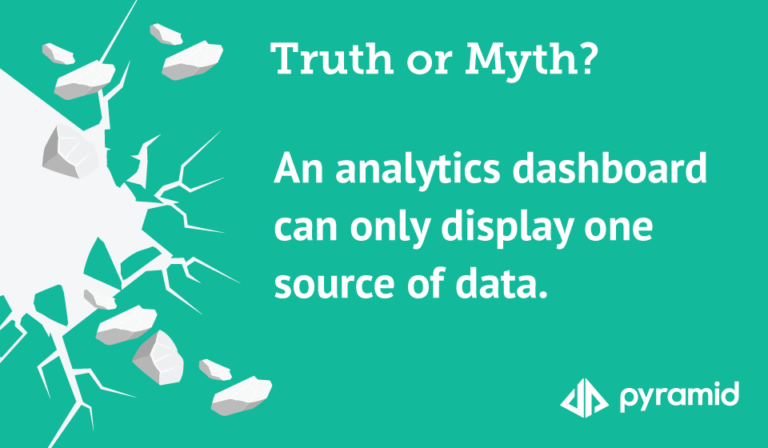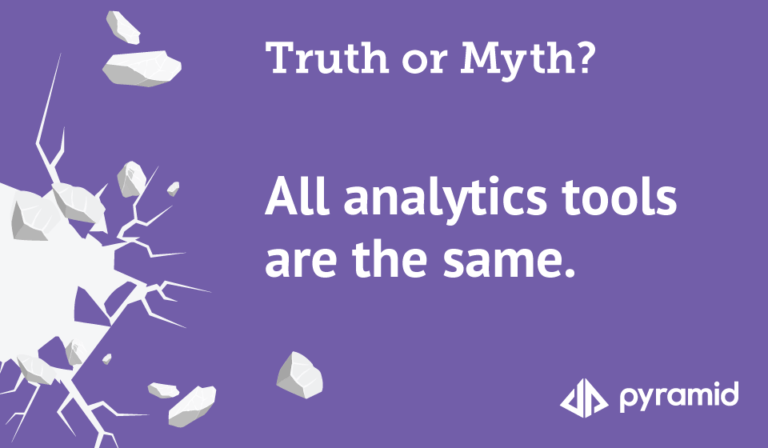Does it still make sense to take a department-by-department approach to analytics? Can you invest in a single platform that can work for all people across all departments, despite the wide range of technical skills, reporting needs, and data access requirements from one department to another?
This is the final in our 12-part series on Mythbusting Business Intelligence vs. Decision Intelligence. Throughout this series, we have outlined common beliefs people have about BI tools and how these beliefs limit potential success. We have established how traditional BI is failing to deliver value in the world we operate in today and have presented Decision Intelligence as what’s next in analytics.
According to Forrester, the vast majority of organizations use two or more BI tools. A quarter of all organizations use ten or more tools to help people access data to make better and faster decisions. Despite all of these tools, the facts remain:
- “Less than 20% of people who need access to BI/analytics tools have access, and the analytics experience is difficult to scale because tools are difficult to use,” according to McKinsey & Co.
- “The average adoption rate of business intelligence (BI) among employees in mid to large companies is 15%,” according to BARC, The BI Survey 22.
These numbers are astounding when you consider the massive amount of data organizations are producing and the wealth of intelligence embedded in the data that could be used to drive profitability, productivity, and competitiveness.
Within many organizations, it’s common to see different people using different departmental analytics tools. One of the reasons for this is the widely held belief that it should be left up to each department within the organization to determine its best-fit solution. Organizations often lack a strategic, organization-wide approach to BI and analytics. People in departments make decisions about the analytic capabilities they need and see no reason to approach this differently.
The thing is, adoption goes down as the number of analytic tools increases. And as tools proliferate, the whole analytics experience becomes fragmented and complex, reinforcing the clamor for more tools. So while a bottom-up approach makes analytics and BI tools widespread, the transformational benefits are rarely seen.
Tools require technical skills, resulting in backlogs of requests and inconsistent reporting. When organizations continually add new tools designed for specific people and use cases, it exacerbates the growing problem of tool sprawl.
It’s a self-defeating cycle.
The truth is… you CAN take an organization-wide approach to BI and analytics.
Data-driven cultures do NOT thrive with a departmental approach to analytics. To enable a data-driven culture quickly, you need to take a more strategic, organization-wide approach to analytics. Everyone needs insights, not just the expert few, regardless of where they sit within the organization.
While each type of person has individualized analytics needs, they shouldn’t rely on point solutions with limited scope and enterprise reach. By taking a strategic approach to analytics and choosing a unified platform purpose-built for people with different needs, organizations can reduce reporting backlogs, produce consistent reporting, and extend analytics across the organization. This helps organizations grow revenue, identify new revenue streams, reduce cost, complexity, and risk, and boost productivity by saving time and money.
Pyramid Delivers Decision Intelligence for All
There are many reasons why self-service analytics and BI technology are falling short, but there are fewer reasons to continue living with the shortcomings. Our guide, Mythbusting Business Intelligence vs. Decision Intelligence, reveals some key truths about BI tools and shows you how decision intelligence delivers what’s next in analytics. Get instant access (no registration required).
Many leaders believe using data-led insights for decision-making is mission-critical. At Pyramid Analytics, we believe in making it easy to provide insights for everyone. We enable BI and analytics leaders to manage and tailor access to insights for any person inside and outside the organization so they can answer questions, collaborate, and take action. With the right analytics platform in place, no data source, data-driven intelligence, or AI-enabled insight needs to be off-limits to any person, no matter their background or skill set.




